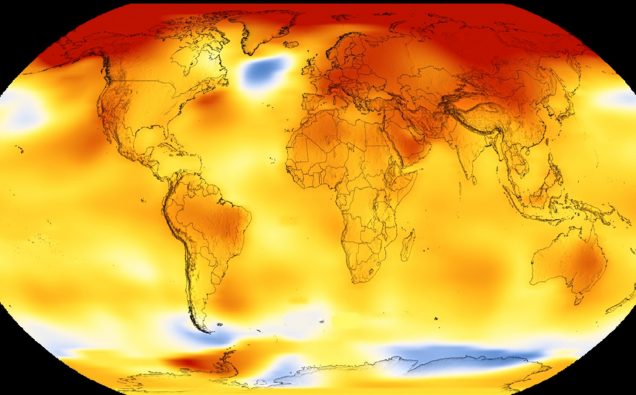
Recent reports and natural disasters are once again reminding the world that it’s not going to be business as usual on our warming planet.
June 2019 was the hottest month on record with Europe bearing the brunt of an unusually intense heat wave. Antarctica’s ice is melting faster than expected. Floods have been frequent. The poorest countries have been hit the hardest.
The climate change, though not behind each weather extremity on the Earth, is the suspect in chief.
But the climate change is already is blamed for driving migration, Conflicts, famines, global warming and poverty are other factors behind unprecedented movement of people toward greener places.
The heat stress is likely to take a toll on the global economy with $2.4 trillion output losses, according to the International Labor Organization (ILO)
Revealing that that the world’s poorest countries will be worst affected, particularly in West Africa and South-East Asia, the ILO says the lost economic output will be equivalent to 80 million full-time jobs – or 2.2 per cent of total working hours worldwide – during 2030.
“The impact of heat stress on labor productivity is a serious consequence of climate change,” said Catherine Saget, Chief of Unit in the ILO’s Research department and one of the main authors of the report, Working on a Warmer Planet.
“We can expect to see more inequality between low and high-income countries and worsening working conditions for the most vulnerable.”
Meanwhile, a study, sponsored by NASA and the European Space Agency ESA, finds that Antarctica ice losses from the continent have tripled since 2012, with 180 billion tons of ice pouring into the ocean every year.
The collapse of ice sheets in Antarctica will spike a rise in sea levels with trouble for low-lying cities and communities.
Apart from the flooding of the coastal areas, rising sea levels contaminate freshwater sources, and saltwater interferes with agriculture by stunting crop growth, a report published on NASA and UN websites said last week.
According to the European Centre for Medium-Range Weather Forecasts, the heatwave sweeping Europe last week showed average temperatures at more than 3.6 degrees Fahrenheit above normal.
“Data provided by the Copernicus Climate Change Service (C3S), implemented by the European Centre for Medium-Range Weather Forecasts on behalf of the European Union, show that the global-average temperature for June 2019 was also the highest on record for the month. It was about 0.1°C higher than that of the previous warmest June, in 2016, following a strong El Niño event.”
![Surface temperatureres of some European countries on june 27th 2019 Image: European Space Agency [CC BY-SA 2.0 (https://creativecommons.org/licenses/by-sa/2.0)]](https://upload.wikimedia.org/wikipedia/commons/thumb/2/2e/The_heat_is_on_%2848138322288%29.jpg/1920px-The_heat_is_on_%2848138322288%29.jpg)
Surface temperatures of some European countries on june 27th 2019 Image: European Space Agency [CC BY-SA 2.0 (https://creativecommons.org/licenses/by-sa/2.0)]
The mercury in Germany, the Czech Republic and Poland rocketed past 100 degrees Fahrenheit.
The excess heat at work will pose both health and economic dangers, the UN agency explains. Agriculture and construction will suffer badly from the impact.
“With some 940 million people active in agriculture around the world, farmers are set to be worst hit by rising temperatures, according to the ILO data, which indicates that the sector will be responsible for 60 per cent of global working hours lost from heat stress, by 2030.”
Construction will also be “severely impacted”, with an estimated 19 per cent of global working hours lost at the end of the next decade, says the ILO report.
The areas of activity to be badly affected by heat stress will include refuse collection, emergency services, transport, tourism and sports, with southern Asian and western African States suffering the biggest productivity losses, equivalent to approximately five per cent of working hours by 2030.
“The impact of heat stress on labor productivity is a serious consequence of climate change, which adds to other adverse impacts such as changing rain patterns, raising sea levels and loss of biodiversity,” Catherine Saget, Chief of Unit in the ILO’s Research department and one of the main authors of the report, says.















